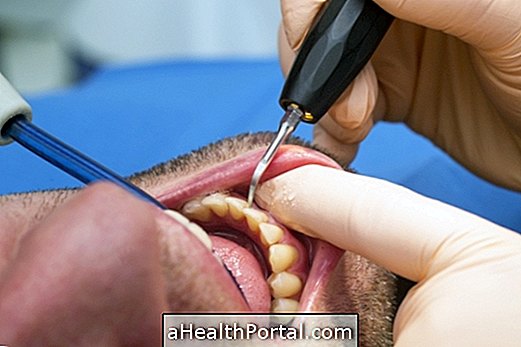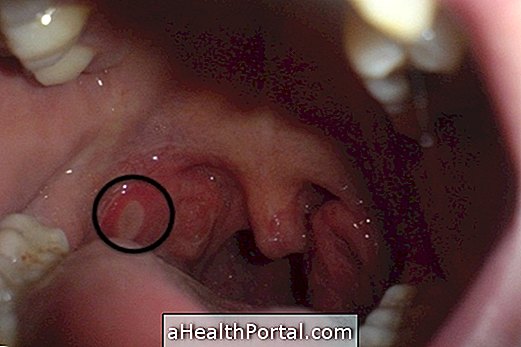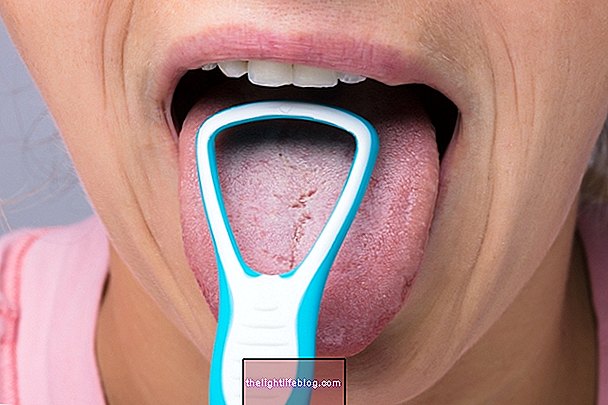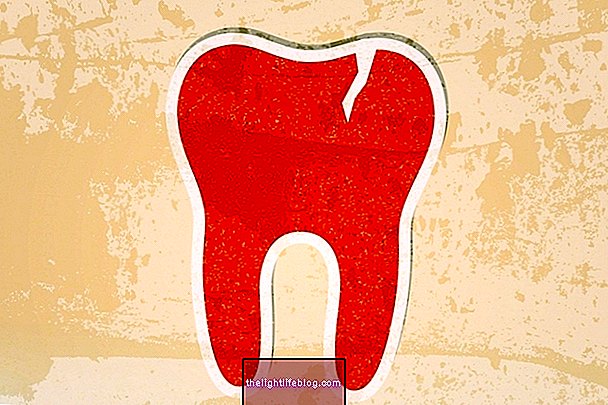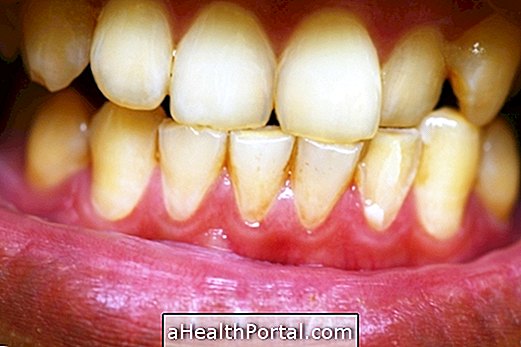Flossing is very important to remove food debris and plaque where the brush does not reach easily, such as between the teeth and the gum, preventing the development of diseases such as gingivitis and cavities.
This habit should be followed daily, at least 1 or 2 times a day, however, the ideal would be to pass after all the main meals. In addition, the timing of use can also vary between before or after brushing, because if the thread is correctly threaded, the result will always be beneficial to the health of the mouth.
To pass the floss correctly, the following steps are guided:
1. Wrap the ends around the middle fingers after separating about 40 cm of string;
2. Insert the thread between the teeth, using the support of the index fingers and thumb, as in the figure below:
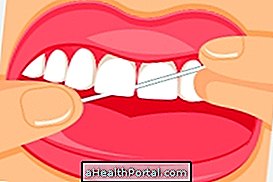
3. Thread the string into each tooth, hugging it in a C-shaped movement, as shown below. You should press on one side and then the other, and repeat the process 2 times on each side, on all teeth.

4. Also pass the wire gently at the base of the tooth, which is important to remove the impurities infiltrated between the tooth and gum;

5. Remove the wire, in a back-and-forth motion, to carry the rest of the dirt;
6. Prefer to use a new part of the wire for each region to be cleaned, so that no bacteria and scraps of plaques pass from one tooth to another.
Do not use too much force to insert the cord so it will not hurt. In addition, if the gums are frequently swollen or bleeding, it may be a sign of gingivitis, so it is important to continue the oral hygiene with the yarn, brush and rinse, and schedule an appointment with the dentist.
Types of dental floss
The main types of dental floss, sold in pharmacies or supermarkets are:
- Multifilament yarn : it is the most traditional yarn, and there are several versions, with flavor, for example.
- Single filament yarn : Thinner and flatter, with greater strength, it prevents it from breaking or fraying during use, and is best suited for people with more close teeth who have more difficulty in using the yarn.
- Super floss wire : it is a wire that has a firmer and flexible part, a thicker and spongy one and a last one with the normal yarn. It adapts to the opening of the teeth, and is indicated for those who have larger spaces between the teeth or people using orthodontic appliance and bridges.
Each person can best adapt to one type of dental floss, so there is no one that is more recommended than the other. There are several brands that produce dental floss, such as Colgate, Oral B, Sanifill or Sensodyne, for example, and the price varies between R $ 5.00 and R $ 20.00, depending on each type and location. sells
How to floss with orthodontic appliance
If you use an orthodontic appliance, you should be very careful about cleaning your mouth because the appliance will retain a lot of food, so you should also floss about twice a day.
To floss, first pass the thread through the inside of the bow connecting the brackets, as in the picture below, to then hold the wire with both hands, curl the ends with your fingers and do the entire procedure explained in step-by-step, repeating the process for each tooth.

As the floss is soft, to facilitate the passage of the thread behind the device, there is the Passa Fio, which is a harder tip, made of silicone, which helps guide the floss to the desired region. This is the only function of the wire runs, because then the cleaning between the teeth is usually done with the dental floss.
The Super floss wire also makes it easier to clean the teeth, as the firmer stem helps a more practical passage through the bow of the appliance, and then cleaning normally with the spongy or thinner parts.
Other tips for having a clean, healthy smile
In addition to daily flossing, to keep your mouth clean, free of diseases and blemishes, it is important to follow some tips, such as:
- Brush your teeth with a soft-bristled brush at least 2 times a day, and always before bed. Also check how to brush your teeth better;
- Clean the tongue after brushing, using the brush or tongue cleaner to take the impurities from the inside to the tip;
- Consult your dentist every 6 months or 1 year to perform a thorough cleaning and mouth health assessment;
- Avoid foods rich in sugar as they stimulate the formation of cavities.
It is also important to remember that those who wear dentures or prostheses should also be careful to clean and brush them daily and, moreover, they should be well adapted to the mouth, to prevent plaque buildup and wound formation.
